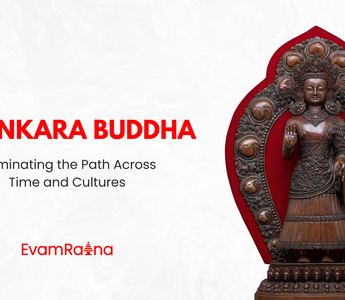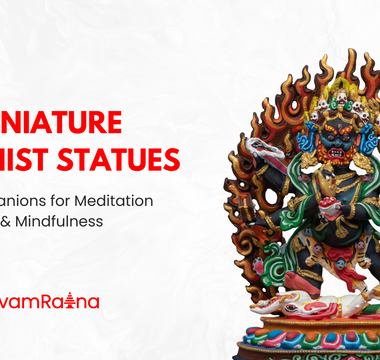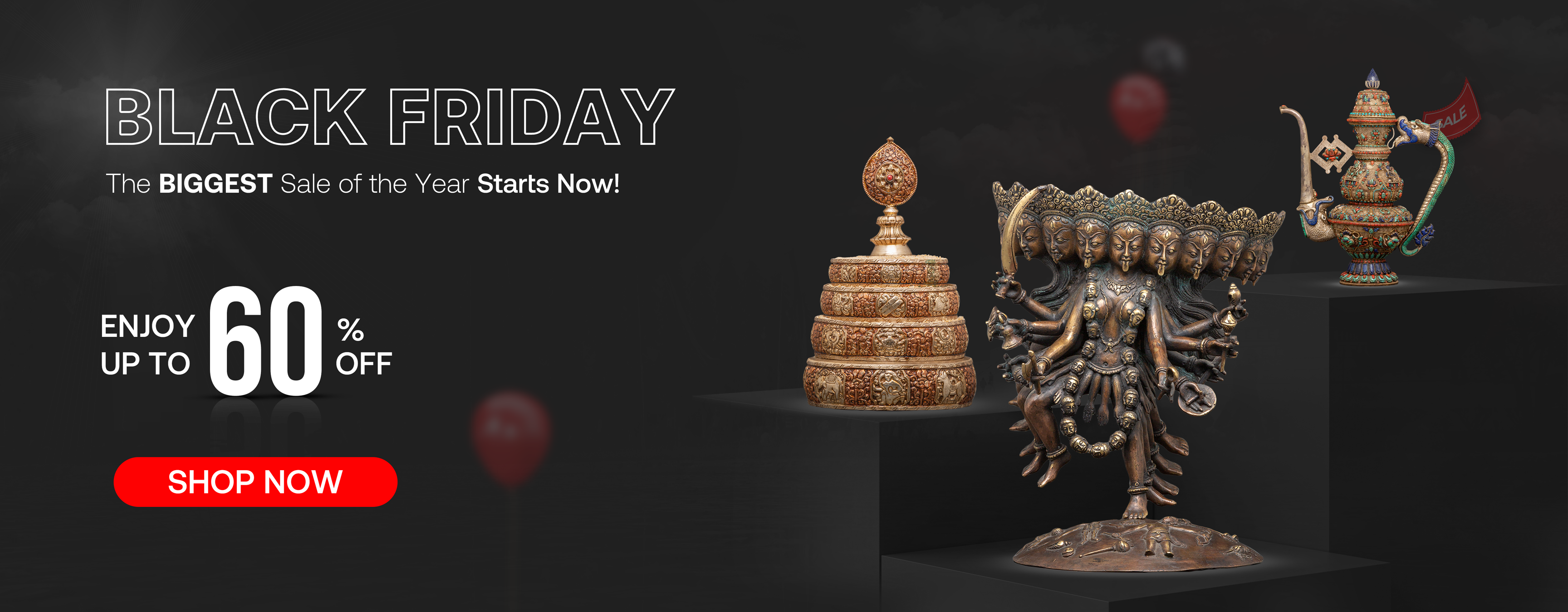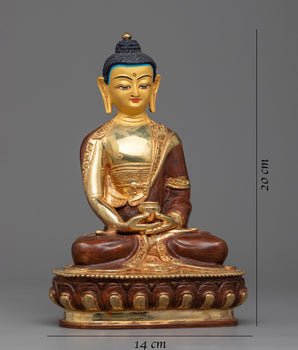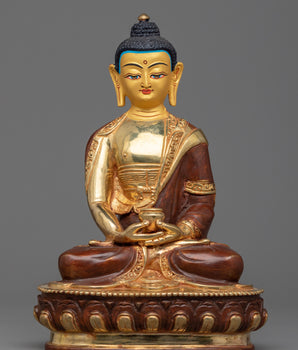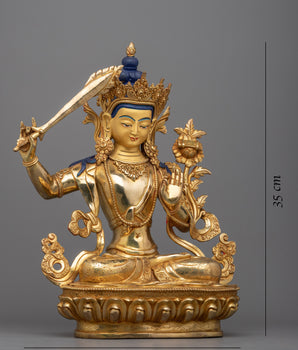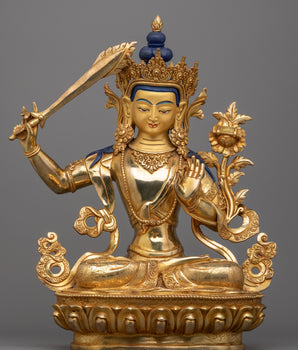Dīpaṅkara (Dipamkar/Dipankara), meaning “lamp-bearer,” is one of Buddhism’s most celebrated Buddhas of the past. He is best known for issuing the prophecy (vyākaraṇa) that an ascetic named Sumedha would one day become Gautama Buddha. Revered in diverse traditions, he symbolizes wisdom and illumination, guiding practitioners across centuries through art, story, and ritual.

Canonical Origins: The Prophecy That Sparked a Path
The earliest account of Dīpaṅkara appears in the Buddhavaṁsa of the Pāli canon. Here, Sumedha, a wealthy Brahmin turned hermit, renounces his riches to pursue enlightenment. When Dīpaṅkara visits the city of Ramma, Sumedha spreads his matted hair on muddy ground to create a clean path for the Buddha. This selfless act inspires Dīpaṅkara’s prophecy: Sumedha will become Gautama Buddha after perfecting the ten pāramīs (perfections).
Sanskrit sources like the Mahāvastu and Lalitavistara recount a similar narrative with Megha Mānava (Megha), a young Brahmin who scatters lotus flowers before Dīpaṅkara, wipes his feet with his hair, and vows to achieve Buddhahood. Despite variations, both traditions emphasize humility, devotion, and the importance of vows in the bodhisattva path.
More similar canonical stories on Buddhavaṁsa, Mahāvastu, Lalitavistara
Names Across Cultures
-
Tibetan: མར་མེ་མཛད་ — Mar me mdzad — (“lamp-bearer”)
-
Chinese: Dìngguāng Rúlái (定光如來, “Tathāgata of Stable Light”) and Rándēng Fó (燃燈佛, “Lamp-Lighting Buddha”)
-
Nepalese Newar: Deeply integrated into ritual and festivals.
-
Mongolian and East Asian Traditions: The Buddha is venerated as a symbol of wisdom and continuity across cosmic time.
Art and Iconography of Dipankar Buddha
Dīpaṅkara is often portrayed standing with one hand in abhaya mudrā (gesture of fearlessness) and varada mudrā (gesture of giving). He is sometimes depicted holding a lamp or with a flame-like halo, symbolizing illumination. Traditional iconography often shows him adorned with monastic robes, a serene smile, and elongated earlobes, reinforcing his spiritual authority. In Himalayan and East Asian art, multiple Buddhas are sometimes shown in triads, with Dīpaṅkara representing the past alongside Sakyamuni (present) and Maitreya (future). This imagery reflects themes of wisdom transmission, protection, compassion, and cosmic continuity.
1. Gandharan Reliefs
A remarkable 2nd-century Gandharan panel shows Megha offering flowers, prostrating himself, and flying in reverence. This narrative art emphasizes the prophecy’s pivotal role in Gautama Buddha’s spiritual journey.
2. Northern Wei China Stele
This monumental 5th-century stele portrays Dīpaṅkara with attendants, capturing his enduring significance in East Asia.

3. Nepalese Metalwork
Nepalese artisans created gilt and enameled copper statues of Dīpaṅkara in varamudrā (gesture of giving) and abhāyamudrā, symbolizing protection and generosity. These pieces are often used in festivals.

View All Collection of Dipankar Buddha
4. Tibetan Bronze Sculpture
A Qing-era (17th-century) Tibetan gilt bronze statue depicts Dīpaṅkara in dharmachakra mudrā, emphasizing the Dharma’s continuity.
Festivals Celebrating Dipankara Buddha in Nepal
1. Samyak Festival
The Samyak Mahādān is a grand Buddhist festival in Nepal:
-
Held every 12 years in Kathmandu, 5 years in Patan, and annually in Bhaktapur.
-
Hundreds of Dīpaṅkara images are displayed in public squares, with devotees offering alms and gifts. The event spans three days: the first day focuses on displaying images, the second on mass almsgiving at Bhuikhel field, and the third on women's participation known as Misā Samyak.
-
This tradition dates back to 1015 CE and demonstrates deep community cohesion.
2. Gunlā Month Celebrations
During Gunlā, the sacred month of August in the Nepal Sambat calendar, Dīpaṅkara statues are paraded in vibrant processions accompanied by devotional music (Gunla Bajan) and large paubha paintings are displayed.
-
Newar Buddhist groups also make pilgrimages to Swayambhu and other monasteries.
-
The entire month is a period of spiritual renewal marked by musical performances, offerings, and study sessions, with Dīpaṅkara as the focal point of devotion.
3. Pañcha Dān Festival
Another prominent event is Pañcha Dān or the “Five Offerings Festival.”
-
Devotees offer rice, grains, salt, money, and fruit to monks and shrines.
-
Dīpaṅkara statues are carried through city streets, highlighting his role as a protector and benefactor of devotees.
Symbolism and Spiritual Significance
Dīpaṅkara represents the eternal transmission of wisdom across ages. His story emphasizes:
-
Self-Sacrifice and Vows: Demonstrating that enlightenment begins with deep personal commitment.
-
Interconnected Buddhas: Linking the past, present, and future Buddhas.
-
Community Devotion: Festivals and art underscore his living role in Buddhist culture.
Through art and observance, Dīpaṅkara remains alive—not just in legend, but sculpted in stone, gilded in bronze, and carried in the hearts and streets of Nepalese communities. He stands as a timeless reminder that even the greatest awakening begins with a vow, a gesture, and a promise across time.


